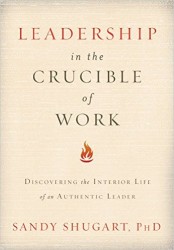 My friend Lance Haun wrote last week about why he thinks we should fight for legislating parental leave in the US. I don’t know that I’ve ironed out my point of view 100%, but I don’t know that I agree with him at this point. Remember, this is a dialogue, not a requirement to conform. :-)
My friend Lance Haun wrote last week about why he thinks we should fight for legislating parental leave in the US. I don’t know that I’ve ironed out my point of view 100%, but I don’t know that I agree with him at this point. Remember, this is a dialogue, not a requirement to conform. :-)
So, as a father to three small children, you might expect me to be for this type of thing. I mean, heck, getting paid to stay home with a baby would be pretty darn awesome. I love my three kids and spending time with them is pure joy.
But here’s the core reason I’m not a raving fan of legislating parental leave:
it’s not the government’s job
Now, if a company out there wants to pay parents, men or women, for leave, then that is an excellent idea. I’m all for it, and I would be happy to work for such an organization. But the truth is that according to census data, approximately half of the workers in the US are working for employers with fewer than 500 employees. I’ve worked in several companies from 10-600 employees (and some larger) in my working life, and I have no earthly idea how those companies would be able to afford paying people for not working. I remember at one employer we had six of our staff members having new babies in a single month!
Family medical leave is one thing–holding your employee’s job while he or she takes time at home for a variety of health and family-related reasons isn’t easy, but it’s doable. But paying them to not work? That’s something else entirely. Several of those companies I worked for were very small or nonprofit organizations, which meant there was little to no wiggle room for things like bonuses or other performance-related measures, much less a coffer set aside to pay people who were expecting children.
But what about Netflix?
The big story last week in this world was about Netflix offering a full year of paid leave for new parents. Having a baby? No worries–take up to 12 months off. People declared the company forward-thinking and were quick to jump on board with the idea.
But this wasn’t forced. It wasn’t legislated. Nobody made them do it.
They chose to.
Why? Probably because it’s a great recruiting tool. It’s also pretty awesome as a retention tool for new parents.I’ve talked before about when our girls were born and my boss didn’t seem especially receptive to me taking ANY time off, even though I only requested a week.Â
And you know what? That’s what started the ball rolling for me to leave that company and find an employer who did offer me some flexibility to support my family, whether financially or by being there physically for them. I think more companies will offer slightly-less-boisterous benefits in this area over time, because they’ll see (as they did with medical insurance, workplace flexibility, and a host of other benefit offerings) that it makes them more competitive, makes employees happier, and creates a better working environment.Â
Last year I was talking with a company about a new leave program for fathers. The company had been losing male employees in the 20-35 age range at 2-3 times the rate of other employee groups, and they determined that it was the long hours surrounding the birth of a new child that often contributed to the turnover.
So the company began offering 1-3 months of paid leave for new dads and reversed the negative turnover trends within a few short months. That’s an exciting story and one that I expect to hear more often as time goes on.
Facebook got a series of kudos and strange looks when it offered to freeze eggs for young ladies who would rather work than start a family. It’s the same story. The company wanted to offer something different that appeals to a specific audience and makes it more competitive than others in the space.Â
The recruiting spin
I’ve recruited for some great (and not so great) companies. The thing that I absolutely loved about one of the good ones was that I could play up some of the benefits we had that no other company offered. Flexibility? We don’t just say it, we live it. Healthcare? We have you covered. Need personal leave? We treat you the same as we treat the CEO–no questions asked. Have an issue? You can get access to anyone, up to the Owner/CEO, in moments.
I’ll say it again: I loved representing the company that offered what others didn’t. And that’s why I think Netflix is doing this. And that’s another (smaller) reason I’m not keen on the government attempting to force employers to provide paid leave for parents. It has to be a choice for the company. Some can afford it and some can’t. Some would be overly burdened, some wouldn’t care. But it’s not a blanket solution, at least not overnight.
Seriously, I’ve been there
When my son was born almost a year ago, my wife had no work benefits to continue her pay. She had some accrued leave and then we used savings to keep her at home until she was ready to go back to work at the end of her leave. And it was fine. I didn’t ask or expect anyone else to foot the bill for her to stay home, because it was our choice in the end. Just as it is her employer’s choice to offer the benefits it does.
This isn’t the same as the Civil Rights Act or the ADA. People don’t choose a specific color, gender, or disability. The discussion here is whether we should pay people who choose to have children, and I’d say it’s up to the company to decide, not the government.
I’d love to hear your thoughts…
 When I realized the link from retention to recruiting
When I realized the link from retention to recruiting
 My friend
My friend 
